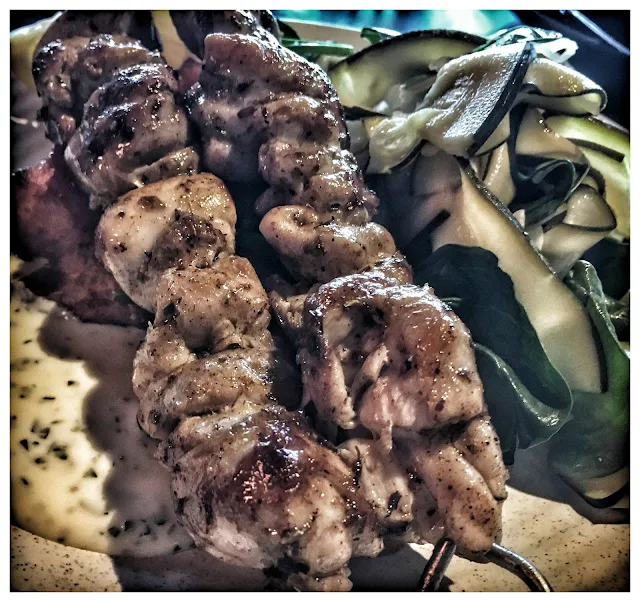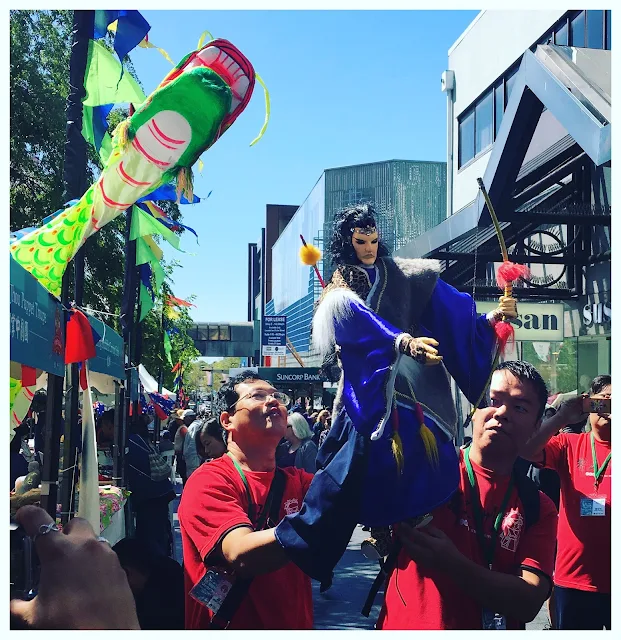 |
| Chicken Croquettes with Alioli. |
It was an occasion for a blokes' lunch - one of our party had sung praises about the Tapas like creations and we could hardly wait! There are sort of two levels at the B & B, one at street ground level and then a quick step up on the side to the right to an inner chamber, where groups gather, with all female hang outs, families and singles. There is a licensed bar, the place has a rustic feel and one feels as if a hang out party is about to begin at one corner of the place.
There is a Iberian or Mediterranean feel about the menu and place. I instinctively think of Siesta after our meal. However, it was not warm the day of our dropping by the B & B, the winter had not fully blown its oceanic winds in this seaside region. So my palate was ready for something grilled, and there they were. The chicken on skewers is always a winner with me, here accompanied with cool cucumber and dips. I am a sucker for croquettes - what we got was exquisite, with a rather crispy exterior and a comfy warm inside of fillings.
Naturally we winded up our meal with Churros, served with a rich dipping chocolate sauce.
This dessert echoed an authenticity about itself. I can say that the food is prepared and cooked with obvious touches of love. Owner David Juarez Vidal recalls with fondness her GrandMa's culinary passion and strong sense of family togetherness.
 |
| Pork and veal meatballs with a rich tomato sauce. |
The Bull & Bear was visited at lunch time. This place was attempted to be booked fby a mate of a mate for dinner recently one Friday evening, but some hurdles were placed for this chap to get a table for around ten persons, including family members under 18 years of age. I am not sure of the reasons but there were a lot of No's said on the phone to this prospective customer. Apparently only Tapas are served on the evenings the place is open for diners.
The "Special Plates" menu appears on the black board and can change weekly. You can expect sightings of Chorizo, Paella, Jamon, grilled octopus, olives, meatballs and spices. There is the aroma of slow cooked beef cheeks, crispy chicken drumettes, twice cooked lamb shoulder and braised pork belly.
On a next visit, I am aiming for these following dishes that caught my eye on the menu:*
The Pulled Pork Baguette
La Espanola: A sourdough toast filled up with smashed avocado (how Aussie!), fried egg, Tumaca and grilled Jamon Serrano. The practice of spreading ripe tomatoes on bread had given rise to the term Tumaca.
and the Valencina Ensaladas: Spanish onion, black olives, Frisee ( a curly bitter leaved endive), orange, croutons and crispy Jamon Serrano go into this delightful light salad mix.
Serrano ham always brings out the best in uplifting a dish when applied with care.
My impressions of the Bull & Bear on this visit in Wollongong NSW are:
Ambiance: 3.5 out of 5
Staff Engagement: 4 out of 5
Culinary Captivation: 4 out of 5
X Factor: 3.5 out of 5
Overall: 3 out of 4
The Bull & Bear Cafe & Restaurant is located at 2 A Voctoria Street, Wollongong city centre, NSW.
Contact +61 2 423 143 15
Opening hours are from 8am every day until late, except for the three days of Sundays to Tuesdays, when it closes at 4pm.
A ten percent surcharge applies to bills on public holidays.





























